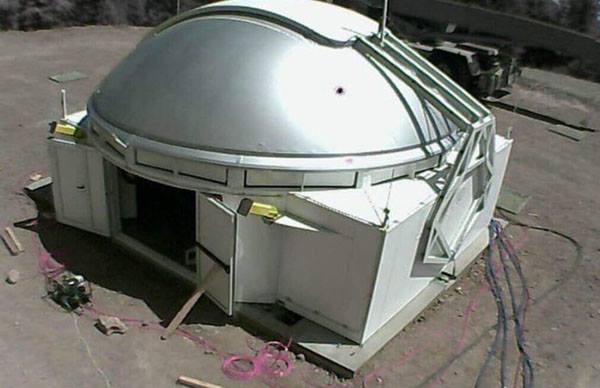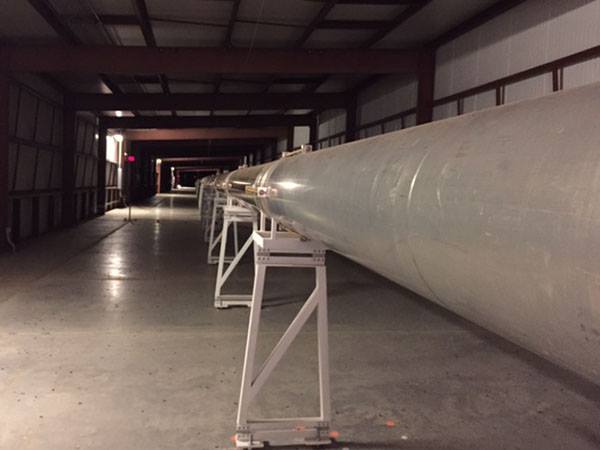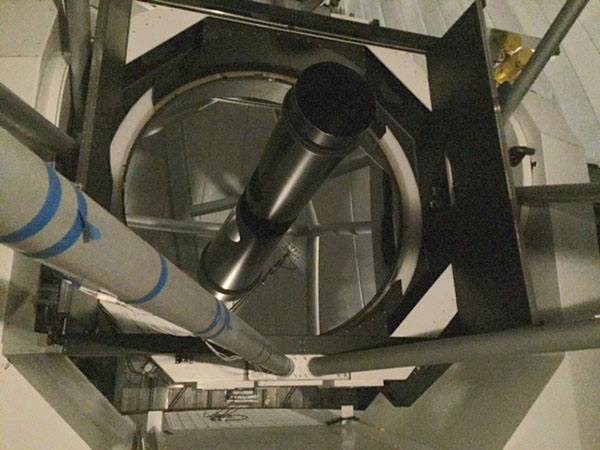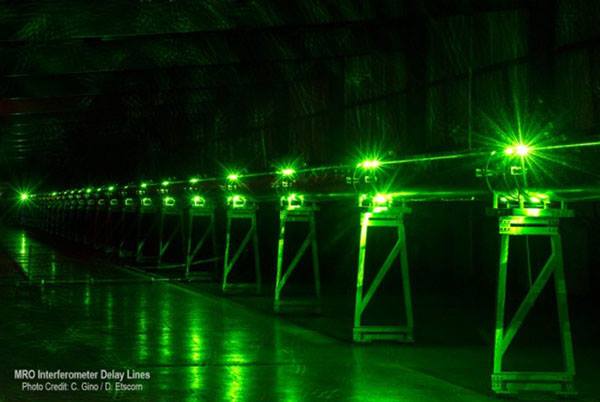 Water Canyon Road, west of Socorro, New Mexico is paved all the way to the Water Canyon Campground. The Campground is beautiful, wooded and self-serve: You put your fees into a pipe and pitch your tent. There are clean pit toilets and yodeling coyotes along with bear-proof trash cans. I’d like to hang out here but we are heading to The Magdalena Ridge Observatory.
Water Canyon Road, west of Socorro, New Mexico is paved all the way to the Water Canyon Campground. The Campground is beautiful, wooded and self-serve: You put your fees into a pipe and pitch your tent. There are clean pit toilets and yodeling coyotes along with bear-proof trash cans. I’d like to hang out here but we are heading to The Magdalena Ridge Observatory.
Water Canyon Road continues on for another 13 miles of unpaved road. It’s not a terrible road: a regular car could do it if you didn’t mind cutting a few low-profile tires and maybe bashing the undercarriage. The sign says 4-wheel drive only and I guess that’s the best way to go. The drop-offs are wonderful and steep, the views towards the valley are eye-twisting.
Even if the scenery was terrible Water Canyon would be worth the drive because the road ends on top of Mt. Baldy and one of the newest, gigantic telescopes under construction. When completed, the Magdalena Ridge Interferometer will have ten 1.4-meter optical telescopes interconnected to provide the resolution equal to a 340-meter diameter mirror (at max zoom). That’s over one thousand feet and that’s a big mirror, my brothers; for comparison the Hubble Space Telescope is 2.4-meters or 8 feet. Nine of the 1.4-meter telescopes will be movable allowing the mirror to reduce in equivalent size to 7.8 meters for those cool, wide-angle shots. One mirror remains in the center.

It’ll be a clunky system. There are no tracks to smoothly zoom in and out. A crane will lift the telescopes and relocate them on pads so changing focal length will be a several day operation. Clunky or not, it will be a huge telescope limited only by the Earth’s atmosphere and the small amount of light gathering surface relative to the size of the array.
The ten telescopes will send an image through pipes to the control room. A vacuum will be maintained inside the pipes to reduce distortion and all ten feeds will be reassembled inside the control room to produce what should be some spectacular space photography. Think of the whole operation as a Very Large Array except in the visible wavelengths.

This pipe will be joined by 9 more. Inside each of the ten pipes in this section will be a shuttle to adjust the information beam’s timing. This adjustment is needed because the light source will always strike the individual telescopes at slightly different times due to their distance from the source. From here they shoot into the control room and the open air.
At the moment the Interferometer has only one mirror. Any high-rollers reading ExNotes who can contribute 11 million dollars to finish the other 9 telescopes would find little resistance to naming the whole damn place after their recently deceased cat. Or themselves.
Like Popeil’s Ginsu knife deal, that’s not all! A short distance away on the same mountaintop is the Magdalena Ridge Observatory, a 2.4-meter, fast reacting telescope presently engaged by the government for tracking Earth orbiting objects. I imagine the idea is to identify and locate the other guy’s space stuff for future elimination in times of war. They can also track missile launches and aircraft as the gimbal is ten times faster than a garden variety telescope.
 The mirror at the MRO is an ex-Hubble part of which there were three built; one is inside Hubble floating around space, the other is at The National Air and Space Museum in Washington, DC.
The mirror at the MRO is an ex-Hubble part of which there were three built; one is inside Hubble floating around space, the other is at The National Air and Space Museum in Washington, DC.
Tours of the Magdalena Ridge facility are infrequent, but don’t let that stop you from taking the ride up to the top. Check online for times and dates.
